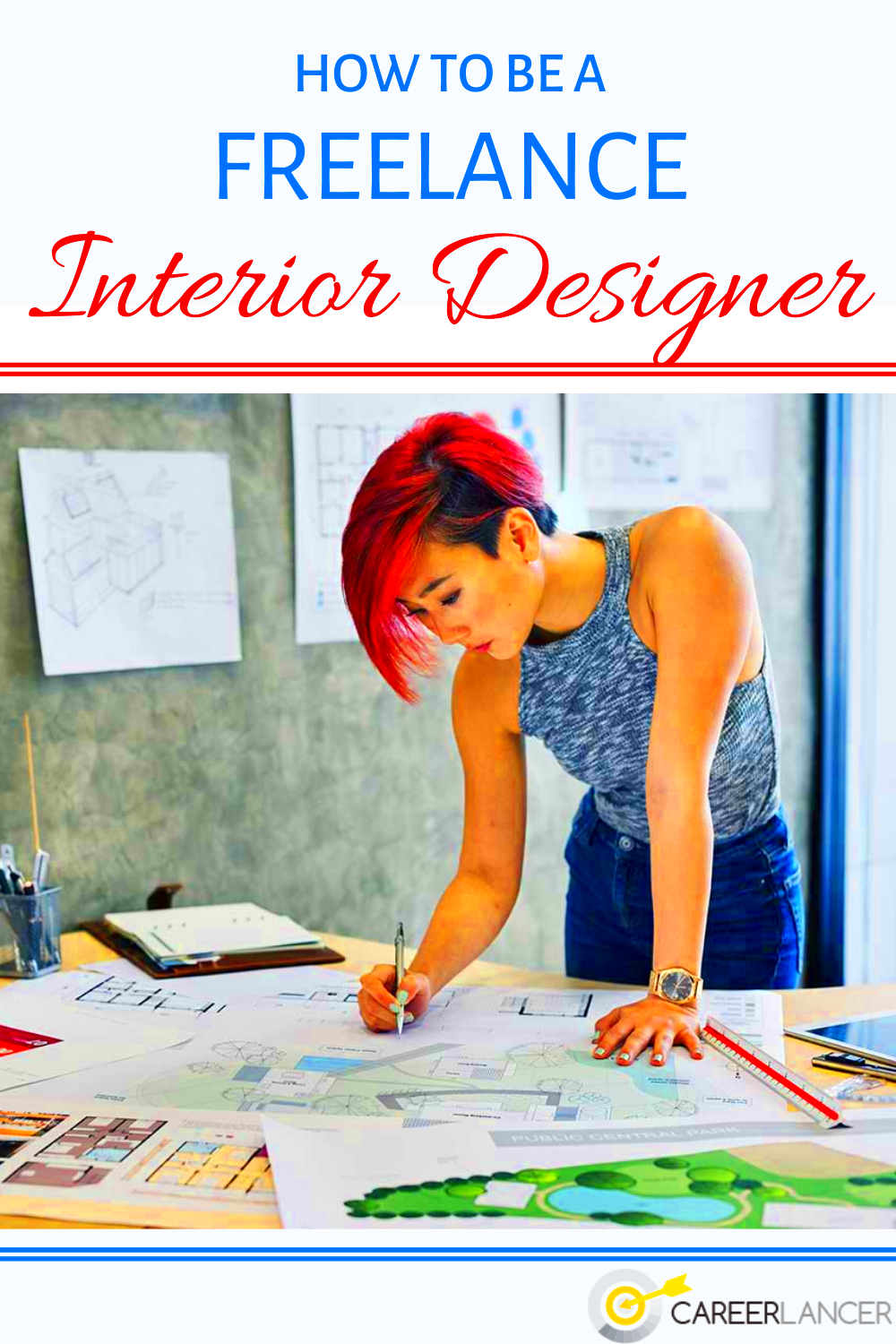Freelance interior designers play a key role in shaping spaces that reflect their clients' tastes and needs. They are not just responsible for making a room look beautiful but also for enhancing its functionality. This job involves a mix of creativity, technical knowledge, and client interaction.
As a freelance interior designer, you will work on a variety of projects, from residential homes to commercial spaces. You will meet with clients to discuss their vision, assess the space, and provide design options that meet their budget and preferences. It's about listening to what your clients want and translating that into a cohesive design.
Freelance designers often manage all aspects of a project, including:
- Creating design concepts
- Choosing furniture and decor
- Coordinating with contractors and suppliers
- Overseeing project timelines and budgets
This role requires adaptability since each project can be different. A successful freelance designer is someone who enjoys working independently, is detail-oriented, and has a passion for creating beautiful and functional spaces.
Essential Skills Needed to Succeed in Interior Design

To thrive as a freelance interior designer, certain skills are crucial. These abilities will not only help you in designing but also in managing your business effectively.
- Creativity: You must be able to think outside the box and come up with innovative ideas.
- Communication: Being able to clearly convey your ideas and understand client needs is vital.
- Project Management: You should be organized and capable of managing timelines, budgets, and resources efficiently.
- Technical Skills: Familiarity with design software like AutoCAD or SketchUp can be very beneficial.
- Knowledge of Design Trends: Staying updated with current design trends and styles will set you apart from competitors.
- Problem-Solving: You need to quickly address issues that arise during a project.
Having a mix of these skills will not only enhance your design capabilities but also help you build strong relationships with clients, ensuring a successful freelance career.
Also Read This: How to Invest in Fiverr
Steps to Start Your Freelance Interior Design Career
Starting your freelance interior design career can be exciting and rewarding. Here are some essential steps to help you launch successfully:
- Gain Relevant Education: While formal education is not always necessary, taking courses in interior design can provide you with the foundational knowledge needed.
- Build Your Portfolio: Start by working on personal projects or helping friends and family. Document your work to showcase your style and capabilities.
- Network: Connect with other professionals in the industry. Attend design events, join local groups, and use social media to build your network.
- Set Up Your Business: Choose a business structure, register your business name, and handle any necessary licenses or permits.
- Create an Online Presence: Build a professional website and utilize social media platforms to showcase your work and attract clients.
- Market Your Services: Use various marketing strategies such as online ads, social media posts, and networking events to promote your services.
- Gather Client Testimonials: As you start getting clients, ask for feedback. Positive testimonials can help you attract more work.
By following these steps, you can set a strong foundation for your freelance interior design career and start making a name for yourself in the industry.
Also Read This: Most Successful Fiverr Sellers in 2024
Building Your Portfolio as an Interior Designer
Your portfolio is one of the most important tools in your freelance interior design career. It showcases your unique style and skills to potential clients. A strong portfolio can help you stand out in a competitive market. So, how do you create one that truly reflects your talents?
Start by gathering images of your completed projects. If you are just starting out and don’t have many completed designs, consider the following:
- Personal Projects: Work on spaces in your home or offer to redesign a friend’s space.
- Mock Projects: Create conceptual designs for fictional clients or showcase redesigns of existing spaces.
- Before and After Shots: Highlight your impact by showing how you transformed a space.
As you build your portfolio, remember to include:
- High-Quality Images: Use clear, professional photos to show your work in the best light.
- Project Descriptions: Explain your design process and the challenges you overcame.
- Diverse Projects: Include a variety of styles and types of spaces to showcase your versatility.
Finally, consider creating an online portfolio. A personal website or a dedicated Instagram page can attract potential clients and give them easy access to your work.
Also Read This: How Much Does Fiverr.com Cost?
Finding Clients and Marketing Your Services
Finding clients is essential for your success as a freelance interior designer. Marketing your services effectively can make all the difference. Let’s explore some strategies to help you attract clients.
Start by defining your target audience. Are you focusing on residential clients, commercial businesses, or both? Once you know who you want to reach, you can tailor your marketing efforts. Here are some effective strategies:
- Networking: Attend industry events, join design associations, and connect with other professionals. Building relationships can lead to referrals.
- Social Media: Use platforms like Instagram, Pinterest, and Facebook to showcase your designs. Engaging content can attract potential clients.
- Word of Mouth: Encourage satisfied clients to spread the word. Consider offering incentives for referrals.
- Online Listings: List your services on platforms like Fiverr or Houzz to reach a broader audience.
Don’t forget to create marketing materials, such as business cards and brochures, to leave with potential clients. Consistency in branding can help you become more recognizable in the market.
Also Read This: How to Find Gigs to Resale on Fiverr
Pricing Your Services as a Freelance Interior Designer
Pricing your services can be challenging but is crucial to your business success. Setting the right rates will not only ensure that you are compensated fairly but also attract clients who value your expertise. Let’s break down how to effectively price your services.
Here are some common pricing structures in the interior design industry:
- Hourly Rate: Charge clients based on the hours you work. This is common for consultation and design work.
- Flat Fee: Set a fixed price for a specific project. This can be appealing to clients who prefer knowing the total cost upfront.
- Percentage of Project Cost: Charge a percentage based on the total budget of the project. This can be beneficial for larger projects.
To determine your rates, consider the following factors:
- Your Experience: More experience usually allows you to charge higher rates.
- Market Research: Check what other freelance interior designers in your area are charging.
- Project Complexity: More complex projects may warrant higher fees.
Lastly, don’t be afraid to adjust your rates as you gain more experience and build a solid reputation. Regularly evaluate your pricing strategy to ensure it aligns with your business goals.
Also Read This: How to Increase Your Fiverr Success Score
Managing Your Time and Projects Effectively
Time management is a critical skill for freelance interior designers. Balancing multiple projects, meeting deadlines, and ensuring client satisfaction can be challenging. However, with effective strategies, you can streamline your workflow and enhance productivity.
One of the first steps is to create a project timeline. This involves breaking down each project into smaller tasks and setting deadlines for each. Use tools like:
- Calendars: Digital calendars can help you visualize deadlines and appointments.
- Task Management Apps: Consider tools like Trello or Asana to keep track of tasks and projects.
- Spreadsheets: A simple Excel sheet can be used to outline projects and their statuses.
Another important aspect is prioritization. Identify which tasks are urgent and which are important. Try the Eisenhower Matrix to categorize tasks based on their urgency and importance:
| Urgent | Not Urgent |
|---|---|
| Important | Focus on long-term goals and planning |
| Not Important | Delegate or eliminate these tasks |
Lastly, don’t forget to schedule breaks. Taking time to recharge can boost your creativity and productivity. Managing your time well will lead to successful project outcomes and happy clients.
Also Read This: Earnings of Freelance Designers
FAQs about Freelance Interior Design
As you embark on your journey as a freelance interior designer, you might have some questions. Here are answers to common queries that can help clarify your path.
- What qualifications do I need? While formal education can help, experience and a strong portfolio are crucial. Many successful designers are self-taught.
- How do I find clients? Networking, social media, and online platforms like Fiverr can help you connect with potential clients.
- What is the typical payment structure? Payment can vary. Designers may charge by the hour, a flat fee, or a percentage of the project cost.
- How can I stand out? Building a unique portfolio, providing exceptional customer service, and staying updated with design trends will set you apart.
- Is it necessary to have a business license? Depending on your location, you may need a license or permit to operate legally. Check local regulations.
These FAQs can guide you as you start your freelance career and help you feel more confident in your decisions.
Conclusion on Becoming a Freelance Interior Designer
Becoming a freelance interior designer is an exciting journey filled with creativity and opportunities. While it requires hard work and dedication, the rewards can be immense. You have the chance to transform spaces and make a meaningful impact on your clients' lives.
To summarize, focus on building your skills and portfolio, finding clients through effective marketing, and managing your time wisely. Remember, it’s not just about creating beautiful spaces but also about understanding your clients' needs and delivering a tailored experience. As you grow in this field, don’t hesitate to seek support from other designers or professionals.
By staying committed and passionate, you can build a successful freelance interior design career that reflects your unique style and vision. So, get started, trust your instincts, and enjoy the creative process!




